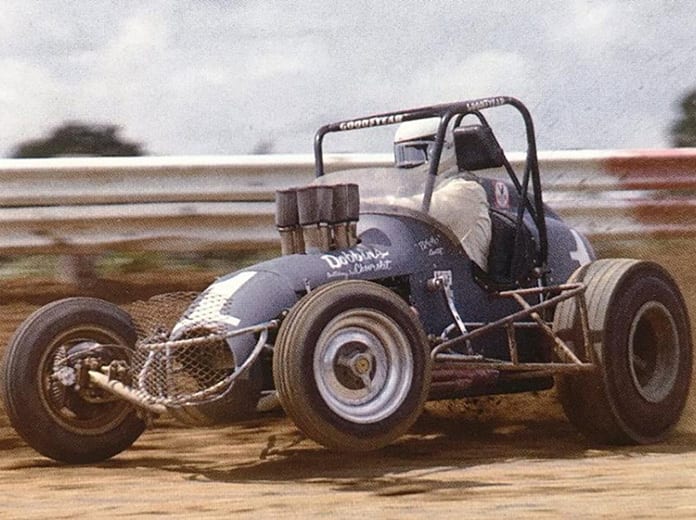IndyCar rookie sensation Santino Ferrucci thrilled fans and pundits alike last season with his dramatic, high-risk, high-result passes on the series’ ovals. The young gun is quick to admit he learned those dicey moves from his Dale Coyne team spotter, Pancho Carter.
“It was invaluable having Pancho in my ear last year,” insists Ferrucci. “It’s hard to find someone today with his amount of experience. Having him coach me through a race, push me to my limits and push me to try different grooves was great. Those passes I made up high at Iowa and Texas were all about trusting my car … and Pancho.”
If anyone can be trusted with running a race car high and hard, it’s Carter. Superbly adept on any kind of track in any type car, he excelled on the tricky, dangerous, high-banked half-miles at Winchester, Dayton and Salem Speedways. A gift only an elite few are blessed with, Carter, perhaps, inherited his skill from his father.
He proudly recalls the time his dad, 11-time Indianapolis 500 starter and 1950 AAA Midwest sprint car champion Duane Carter, set a world’s record at Winchester (Ind.) Speedway after the two qualifiers previous to his run crashed to their deaths on a day memorialized as “Black Sunday.”
“What most people don’t know about that run,” explained Carter, “is that back then if you didn’t like your lap, you thought you could turn a better one, you could wave it off and keep going. Dad waved off two laps before he broke the record.”

That took a cool head, intense focus and unwavering confidence. While Pancho Carter never had to deal with that type of drama, he often displayed those rare attributes. Darting through traffic, running right against the wall, when the fast way around was “up on the hill” that’s where he went.
On May 30, 1977, the USAC midgets and sprint cars ran double features at Salem (Ind.) Speedway. Carter won both midget features and one of the sprint car features. He finished second in the other. Also on Salem’s intimidating half-mile, he won the prestigious Joe James/Pat O’Connor Memorial race four consecutive times.
When asked how he dealt with the chaos of the shifting, bumping and high-speed traffic on the “Banks,” Carter commented tellingly, “When you’re leading you don’t have to worry about it.”
Most often he was leading.
With 70 USAC victories, Carter ranks eighth all time, well ahead of such luminaries as Parnelli Jones, Mario Andretti and Tony Stewart. He won on long and short tracks, paved and dirt, aptly demonstrating his extraordinary versatility.
Carter was born while his parents were on their way to a race in Milwaukee. And if you’re wondering, he got the nickname, “Pancho,” because his dad jokingly referred to his mother’s extended stomach as his “Little Paunch.”
Carter grew up primarily in California, where he started racing quarter midgets. He graduated to three-quarter midgets and then to midgets while attending California State University. In 1972, Carter stormed out of California and landed in USAC with his throttle foot planted firmly to the floor.
Remarkably, he won the USAC national midget title in his first season. He went on to win 23 USAC midget features, including the famed Hut Hundred.
As good as he was in the midgets, though, it was in the fire-breathing USAC sprint cars that Carter came into his own. He eventually won 42 USAC features and claimed the national championship in 1974 and ’76.
“Steve Stapp and I had a good relationship,” Carter remembered. “We worked together well. Steve gave me good cars and my style meshed with the way he set them up. It was simple. If I drove ’em hard and they went fast.”
At a time when the USAC sprint car division was one of the most demanding, competitive series in the world, Carter routinely defeated the likes of Gary Bettenhausen, Larry Dickson, Tom Bigelow, Sammy Sessions and Sheldon Kinser. Tough guys for sure, but Carter proved tougher.
No matter the car he climbed into, Carter won. When he captured the 1974 USAC sprint car championship, he became the first driver to win both the sprint car and midget crowns. In 1978, he added a USAC Silver Crown championship, making him the first driver to win all three major USAC championships.
Click below to continue reading.
